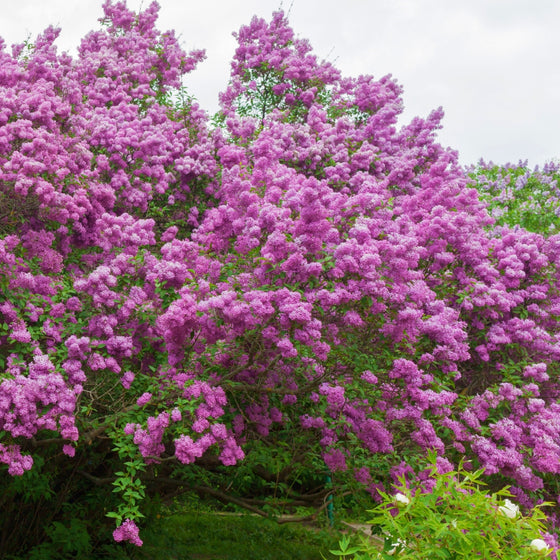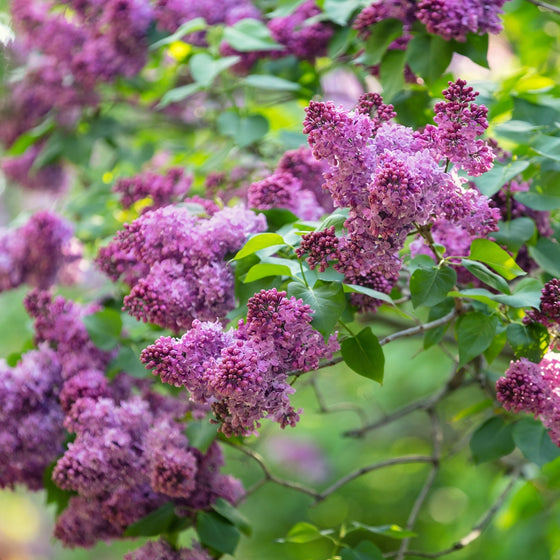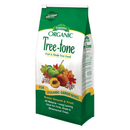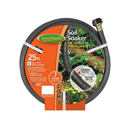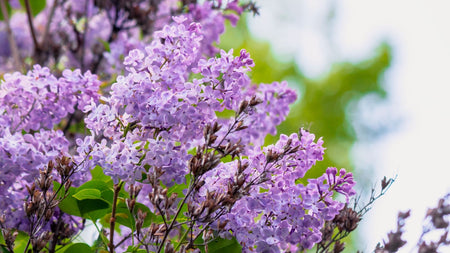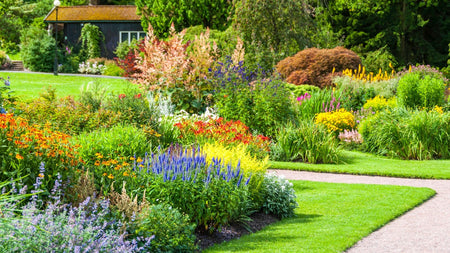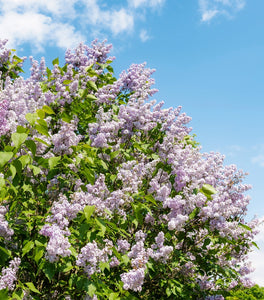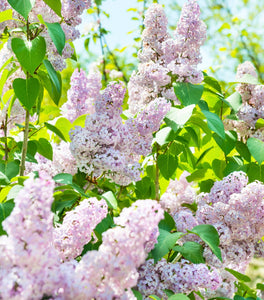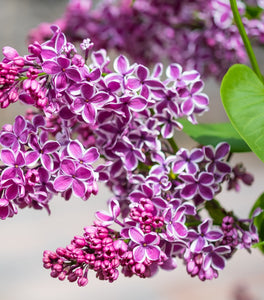
Images Depict Mature Plants
Bloomerang Dark Purple Lilac Shrubs
Bloomerang® Dark Purple Lilac (Syringa x) is a standout reblooming lilac shrub that offers rich color, compact form, and extended seasonal interest. Unlike traditional lilacs that bloom only once in spring, this variety produces an initial flush of deep purple, highly fragrant flowers in mid to late spring, followed by repeat blooming from summer into fall. The dense, rounded shape and abundant flower clusters make Bloomerang Dark Purple an ideal choice for adding long-lasting beauty and fragrance to your garden beds, borders, or containers.
This compact lilac shrub grows to a manageable height of 4 to 6 feet tall and wide, making it perfect for smaller landscapes, foundation plantings, or as a low flowering hedge. It thrives in full sun and well-drained soil, and is hardy in USDA Zones 3–7. Like other members of the Bloomerang series, this lilac is deer-resistant, disease-resistant, and low-maintenance, requiring only occasional pruning after the first bloom to encourage reblooming and maintain shape. Its strong sweet fragrance and continuous flowers also make it a magnet for pollinators such as bees and butterflies.
Whether you're creating a pollinator-friendly landscape, enhancing your spring and summer color palette, or seeking a lilac that fits well in tighter spaces, Bloomerang® Dark Purple Lilac delivers unmatched performance. Its vigorous reblooming habit and intense flower color add lasting impact to any garden design. With its ease of care and repeat flowering, this variety brings the nostalgic charm of lilacs into modern, small-space or high-impact gardens with ease.
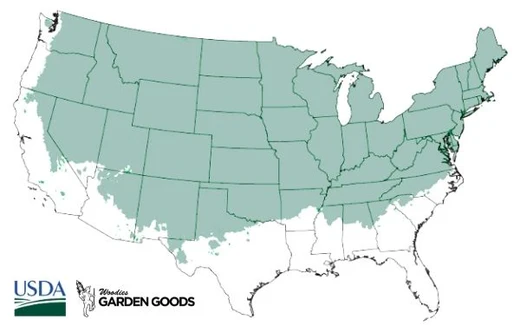
| Hardiness Zone: | 3-7 |
|---|---|
| Mature Height: | 4 to 6 Feet |
| Mature Width: | 4 to 6 Feet |
| Classification: | Broad leaved deciduous shrub, re-blooming |
| Sunlight: | Full sun |
| Habit: | Upright, rounded habit |
| Foliage: | Dark green |
| Flower Color: | Purple, very floriferous |
| Pruning Season: | No pruning needed |
| Soil Condition: | Any well drained soil |
| Water Requirements: | Water well until established |
| Uses: | Tolerates moist soil and full sun. Full sun brings out the best flowering. Will adapt to drier sites. |
How to Care for Bloomerang® Dark Purple Lilac
Be sure to read our planting instructions to ensure a healthy and happy Bloomerang Dark Purple Lilac plant for years to come!
How do I plant Bloomerang Dark Purple Lilacs?
To plant Bloomerang Dark Purple Lilacs, start by selecting a location that receives full sun, as lilacs need at least six hours of direct sunlight daily to thrive and rebloom throughout the season. This compact lilac variety prefers well-drained, slightly alkaline soil, so it’s important to avoid heavy clay or poorly draining sites. Dig a hole twice as wide and just as deep as the root ball, and loosen the surrounding soil to help the roots establish. Place the shrub in the hole so the top of the root ball is level with the ground, then backfill with native soil mixed with compost. Water thoroughly after planting to settle the soil and eliminate air pockets. Once planted, mulch around the base of your Bloomerang Dark Purple Lilac with 2–3 inches of organic mulch, keeping it a few inches away from the stem to prevent rot. This helps retain soil moisture, regulate temperature, and suppress weeds. If planting multiple lilacs, space them about 4 to 6 feet apart to ensure good air circulation and room for mature growth. Avoid using high-nitrogen fertilizers at planting time, as these can reduce flowering. With proper placement and early care, your Bloomerang Lilac will establish quickly and reward you with fragrant, deep purple blooms not only in spring, but again from summer into fall.
How do I water Bloomerang Dark Purple Lilac Shrubs?
Watering your Bloomerang Dark Purple Lilac shrubs properly is key to promoting healthy root development and consistent reblooming. During the first growing season, water deeply once or twice per week to keep the soil evenly moist but not soggy. Focus on watering at the base of the plant to avoid wetting the foliage, which helps prevent fungal issues. Use a soaker hose or drip irrigation to deliver moisture directly to the root zone, especially during hot or dry weather. Proper watering during establishment is essential for encouraging the lush spring bloom and reliable summer-to-fall rebloom that makes Bloomerang Lilacs stand out. Once your Bloomerang Dark Purple Lilac is established—typically after the first year—it becomes more drought-tolerant and only requires supplemental watering during extended dry spells. Monitor the soil moisture during hot months and water when the top 2–3 inches feel dry. Applying a layer of mulch around the base of the shrub helps conserve moisture and minimize temperature fluctuations in the soil. Avoid overwatering, especially in poorly draining soils, as lilacs dislike soggy conditions. With consistent and thoughtful watering, your Bloomerang Lilac will remain vigorous, fragrant, and floriferous all season long.
How do I fertilize Lilac Bloomerang Dark Purple Shrubs?
To fertilize your Lilac Bloomerang Dark Purple shrubs, begin with a balanced slow-release fertilizer such as 10-10-10 in early spring, just as new growth appears. This helps support healthy foliage, strong roots, and the first round of lush, fragrant purple blooms. Apply the fertilizer around the root zone, keeping it several inches away from the base of the shrub, and water thoroughly to activate the nutrients. Alternatively, enriching the soil with compost or well-aged manure provides a natural source of nutrients and improves soil texture, especially in poor or sandy soils. To encourage the signature reblooming habit of Bloomerang Lilacs, consider applying a second, light dose of a phosphorus-rich, low-nitrogen fertilizer after the initial spring flowering cycle ends. This extra feeding helps stimulate additional bud development for the summer and fall reblooms. Avoid over-fertilizing, particularly with high-nitrogen products, as this can result in excessive leafy growth and fewer flowers. With the right fertilization routine, your Bloomerang Dark Purple Lilac shrubs will continue to reward you with rich color, sweet fragrance, and extended seasonal blooms that delight both gardeners and pollinators alike.

How and When Do I Prune My Lilac Bloomerang Dark Purple Shrubs?
To keep your Lilac Bloomerang Dark Purple shrubs healthy and blooming continuously, proper pruning is essential. The best time to prune is right after the first bloom cycle in late spring, before the plant sets new buds for its summer and fall rebloom. Begin by removing spent flower heads to encourage the plant to direct energy into producing new blooms rather than seed formation. Lightly shape the shrub by trimming back any overly long or unruly branches, which helps maintain a compact form and improves air circulation. Avoid heavy pruning in late summer or fall, as this can remove the next season’s flower buds. Annual pruning of Bloomerang Dark Purple Lilacs not only enhances their appearance but also promotes strong flowering throughout the growing season. In early spring, before new growth begins, remove any dead, damaged, or crossing branches to rejuvenate the shrub and open up the center. While these reblooming lilacs are naturally compact, routine post-bloom pruning helps them stay full and floriferous. With consistent care, your Bloomerang Lilac will reward you with a steady display of rich purple, fragrant flowers from spring through fall, making it a standout in any landscape or pollinator garden.


